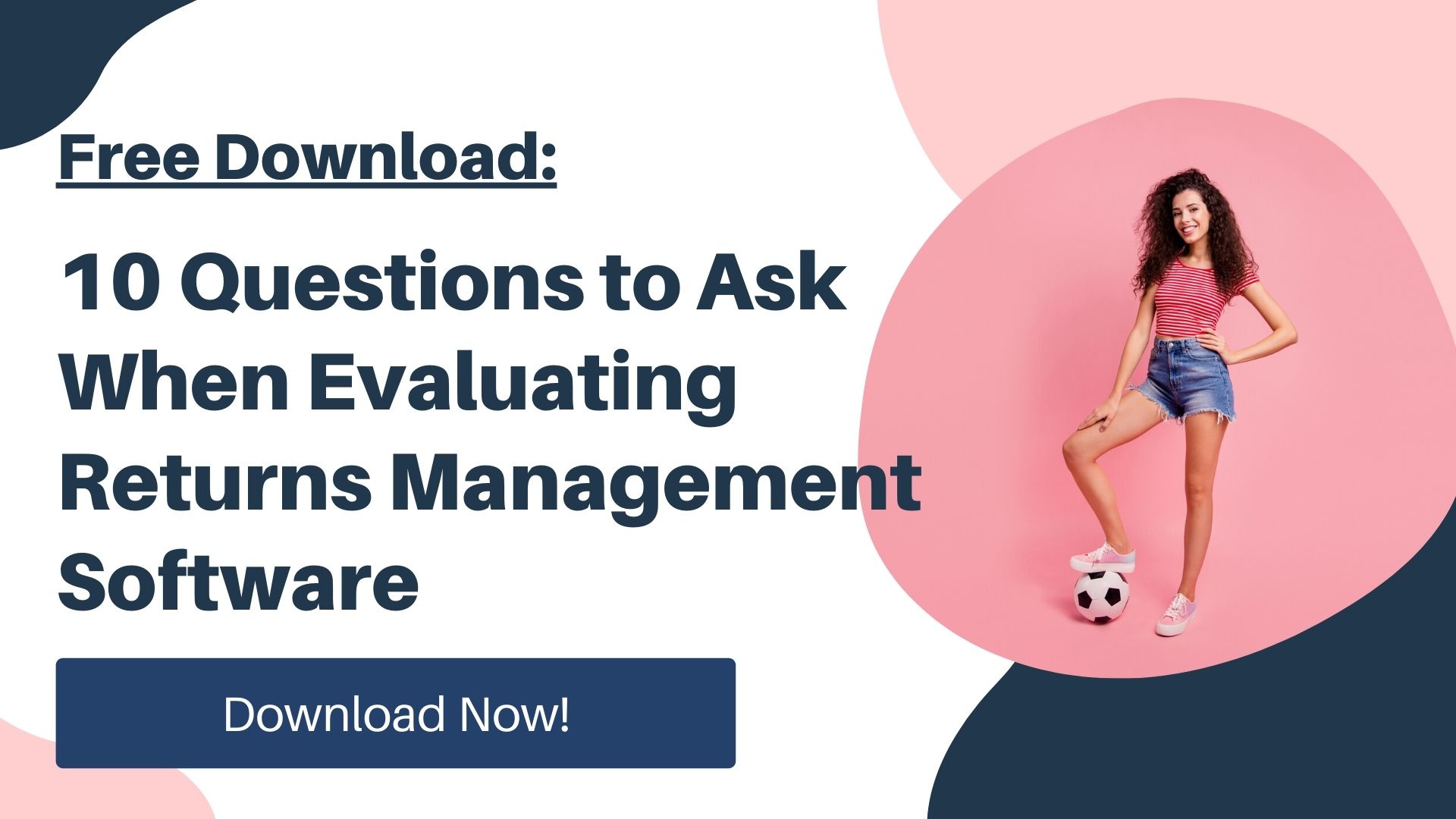Jeff Bezos’ 4 Systems for Scaling an Ecommerce Brand in 2020

How to Grow Your Ecommerce Business
In his 1997 letter to shareholders, Jeff Bezos said:
“We dramatically lowered prices, further increasing customer value. Word of mouth remains the most powerful customer acquisition tool we have, and we are grateful for the trust our customers have placed in us.
Repeat purchases and word of mouth have combined to make Amazon.com the market leader in online bookselling.”
Over 20 years later, this strategy holds true.
Attract customers, deliver value that keeps them coming back, increase order value by expanding options and convenience, and develop the most powerful logistics machine in the world.
The challenge that many merchants face is unlocking sustained growth. How can you make smarter investments to grow your ecommerce business both now and in the future?
We assembled an all-star cast of ecommerce experts to create a universal overview that helps you increase your revenue in a scalable manner.
In this discussion, we hear from Dan Murphy of Privy, Divya Mohan of Stream Commerce, Amit Bivas of Optimove, and Nick Cook of Verbal+Visual.

Revenue in online retail is generated by these fundamental aspects:
This framework allows you to continually expand your customer base and build loyalty among these shoppers – essentially mechanizing profitable growth.
Customer Acquisition
Customer acquisition has almost become ubiquitous with revenue growth.
Customer acquisition consists of finding new prospects, bringing them to your site, and converting them into purchasing customers. It’s the primary way companies expand their customer base, and it’s critical for avoiding stagnation.
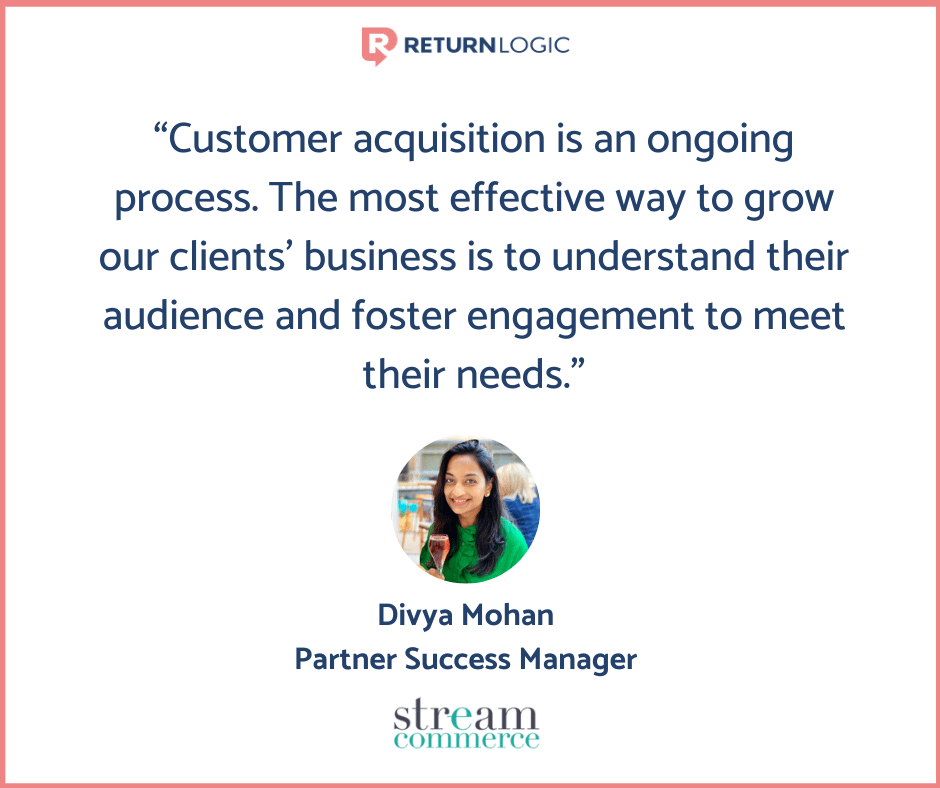
As Divya Mohan emphasizes, customer acquisition is a continual process. To appeal to potential new customers, you must understand them first.
But, in ecommerce, acquiring new shoppers can be much easier said than done.
D2C brands must contend with the ecommerce giants like Amazon and Jet.com and with one another. As a result, customer acquisition costs have continued to soar in recent years.
Dan Murphy highlights that many businesses can’t afford to pour money into advertising and hope for the best. He states the importance of investments, both in terms of money and attention, in the brand experience itself.
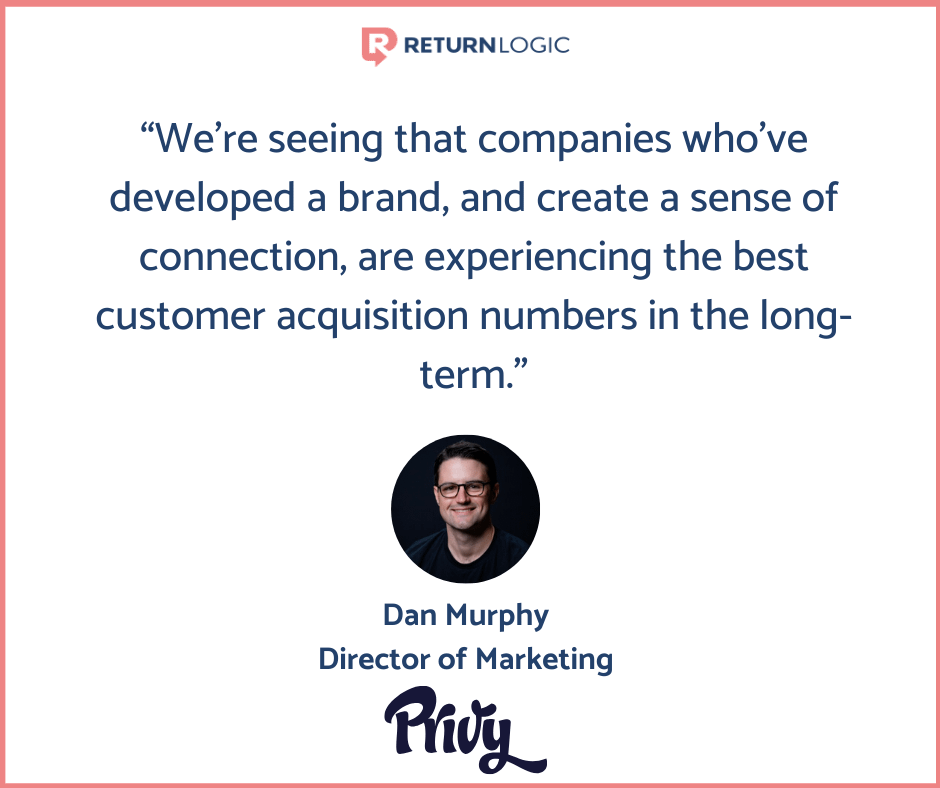
This approach will take time, but having a distinct brand is central to success in ecommerce.
The purpose of establishing a brand is to give shoppers a reason to buy from you. You shape your brand with your story, mission, value proposition, and the experiences you create.
Invest in a functional and good-looking website. Develop the story you want to portray – its sincerity will resonate with your visitors and grow your ecommerce brand.
But as we know, it’s not enough to simply resonate with shoppers. We ultimately want them to convert to paying customers.
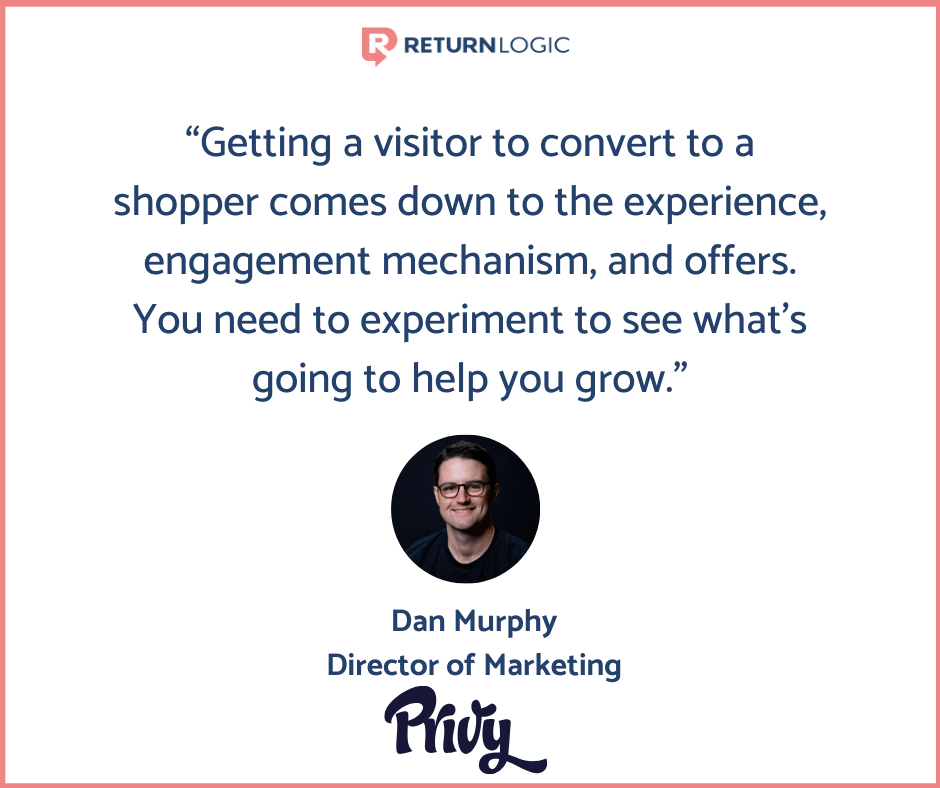
Tools like Privy were designed with this objective in mind. When a new shopper visits your site, you want to excite them, engage them, and give them a reason to either revisit soon or convert at that time.
Divya and her team leverage this power to help clients grow their customer base. She specifies that the nature of customer interaction can make a big difference.
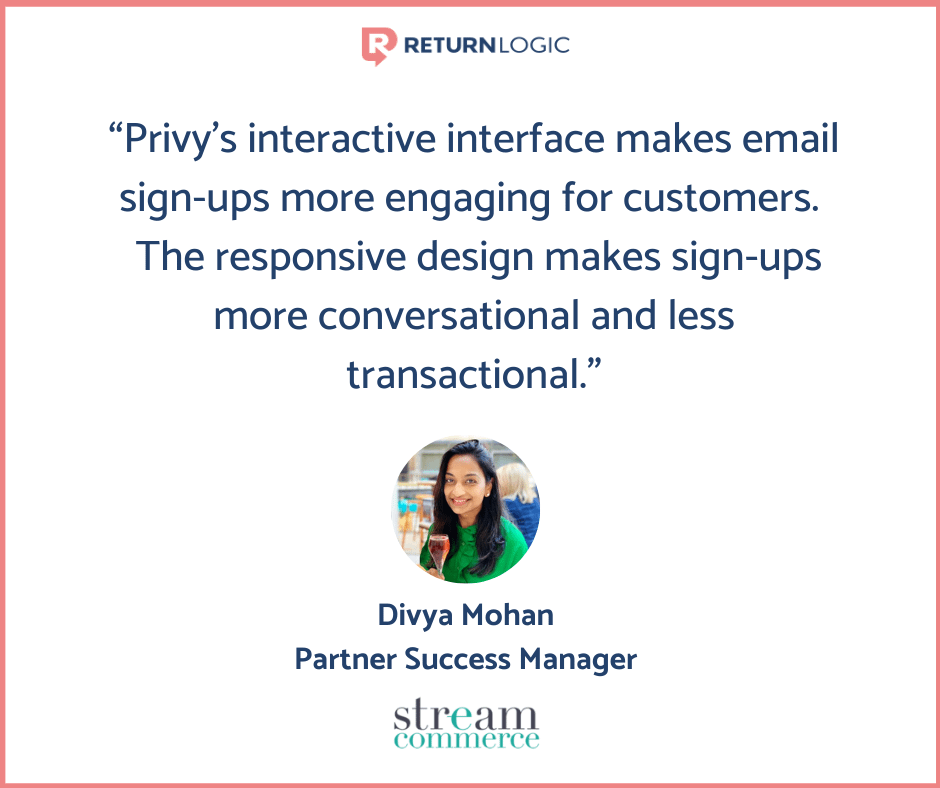
New visitors don’t particularly want to feel like you’re selling to them – they would much rather feel like you’re talking to them.
This is the premise of conversational marketing.
Once you’ve got the foundational experience and systems in place, it’s time to optimize for conversion. The best way to learn is to experiment.
Test out different messages, mediums, and offers to see what works best for your business and customers.
If you can convert shoppers without discounts, then absolutely do so. But percentage or fixed discounts can be effective at pushing a new visitor to take the next step in the customer journey.
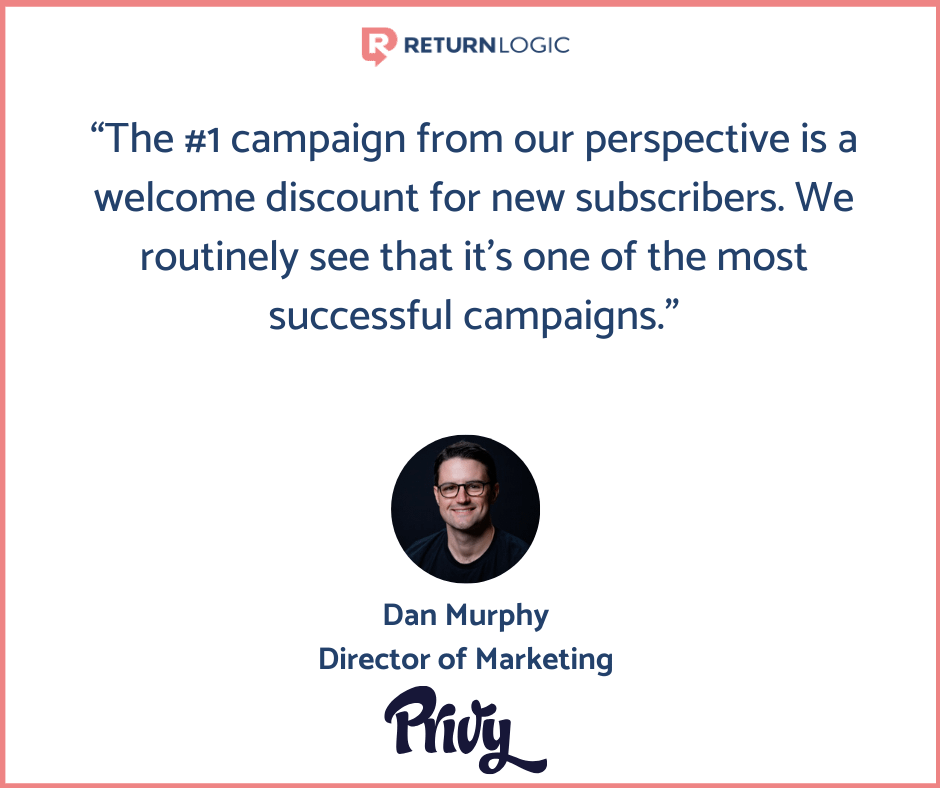
In terms of particular campaigns, Dan suggests offering a welcome discount as a way to drive first-time purchases.
Consider offering an incentive in exchange for a visitor providing their email address as well. Not only does this campaign drive new sales, but it also gives you new contact information that can help grow your ecommerce business. Once you have them, you can continue to engage those new customers and nurture them along to their next purchase.
But after a shopper purchases, when should you start to re-engage them?
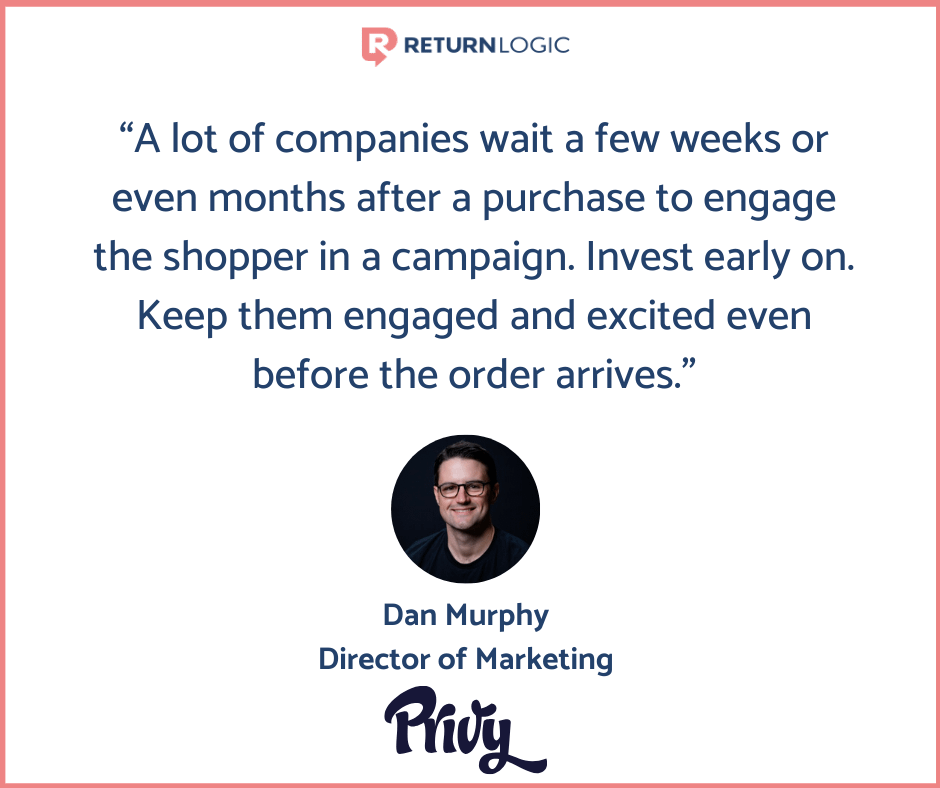
By maintaining this excitement early on, you can prevent buyer’s remorse before it fully manifests itself.
Here is the time to help a shopper get to know your brand, your story, and what makes you unique.
The brand connection instantly sets you apart from the facelessness of ecommerce giants. It gives shoppers a reason to come back.
Be sure to engage with your shoppers while they’re engaging with you. A great example of early engagement is an order follow-up message.

Go beyond simply confirming the order – add a tip or suggest a complementary item for the shopper.
Care instructions or a style guide would be excellent for this purpose.
Small details like this can encourage new shoppers to become repeat buyers and set them up to be brand evangelists.
Customer acquisition traditionally focuses on converting new shoppers. But we want to fuel an effective acquisition mechanism that feeds directly into customer retention.
Customer Retention
Customer retention is all about engaging your existing customers and creating more value for them, and is a vital part of growing your ecommerce brand.

The importance of retention in ecommerce can’t be understated.
For one brand we partner with, multi-purchase shoppers have spent an average of 4 times as much as one-time shoppers – spending an average of 13% more per order.
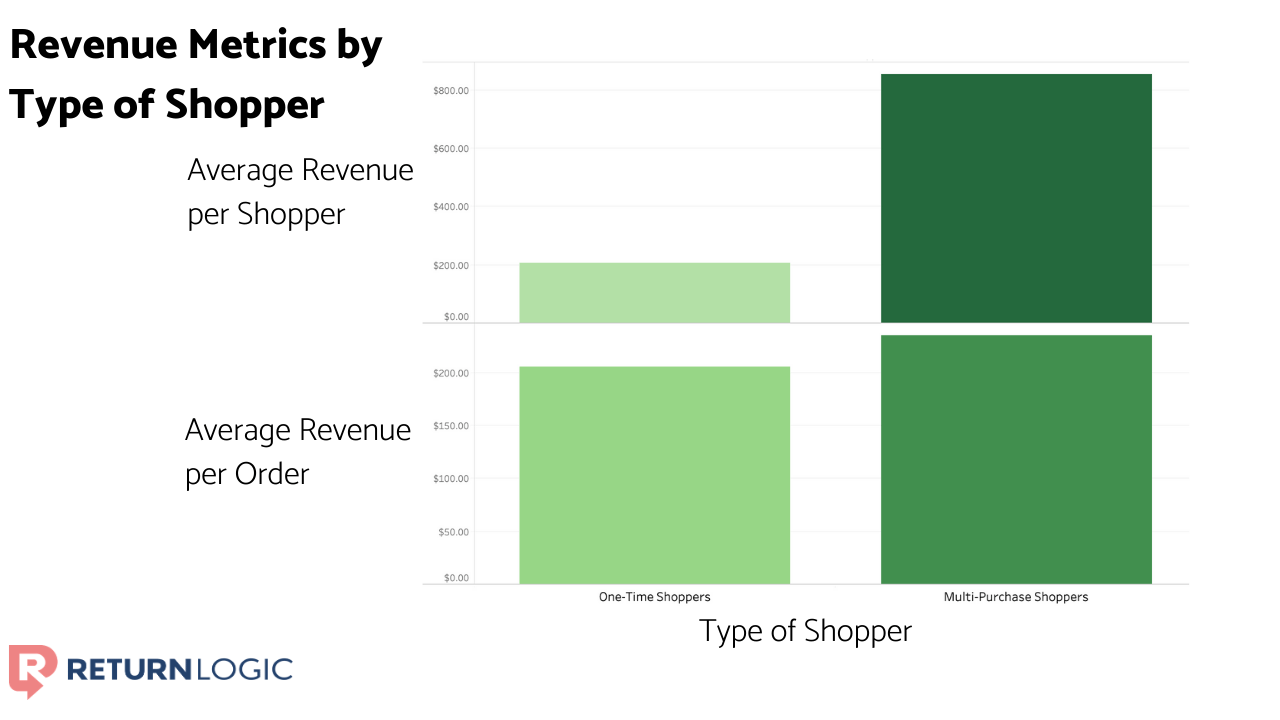
Often, multi-purchase shoppers are disproportionately more valuable than one-time shoppers. This disproportion is due to their propensity to make additional purchases and willingness to spend more per purchase.
As ecommerce markets mature and acquisition costs continue to rise, customer retention is becoming more of a priority among retailers and marketers alike.
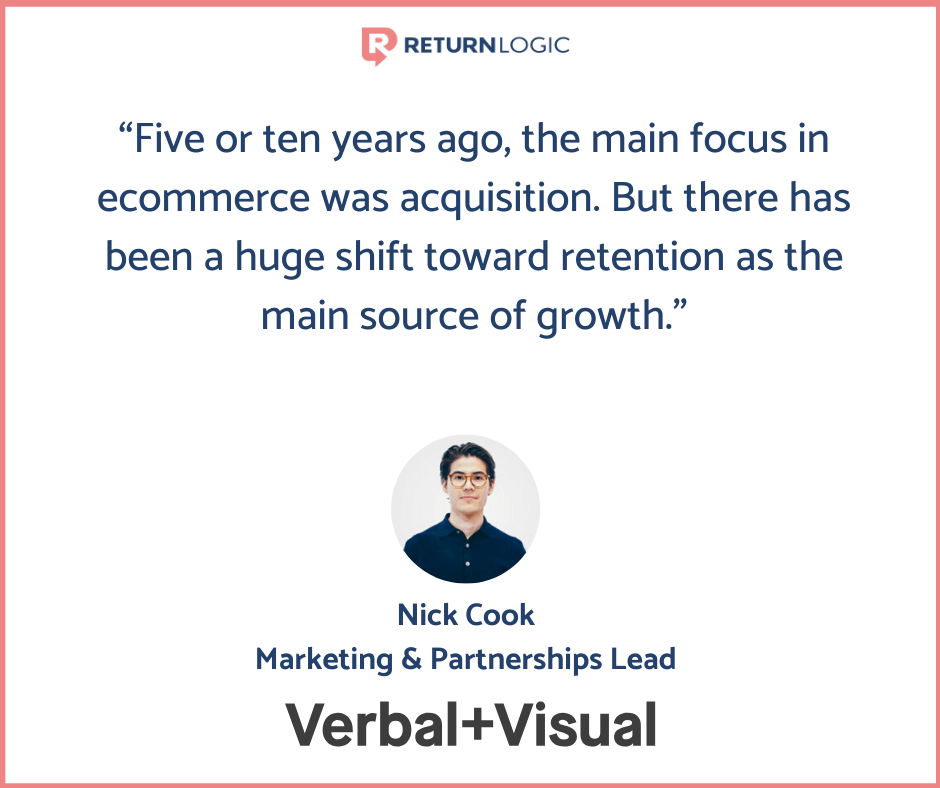
It’s hard to continually scale a business by simply placing ads and acquiring customers via social media.
Repeat purchases are key, often contributing nearly half of a brand’s revenue mix, particularly in the apparel market.
Customer retention is all the more important in highly competitive markets.
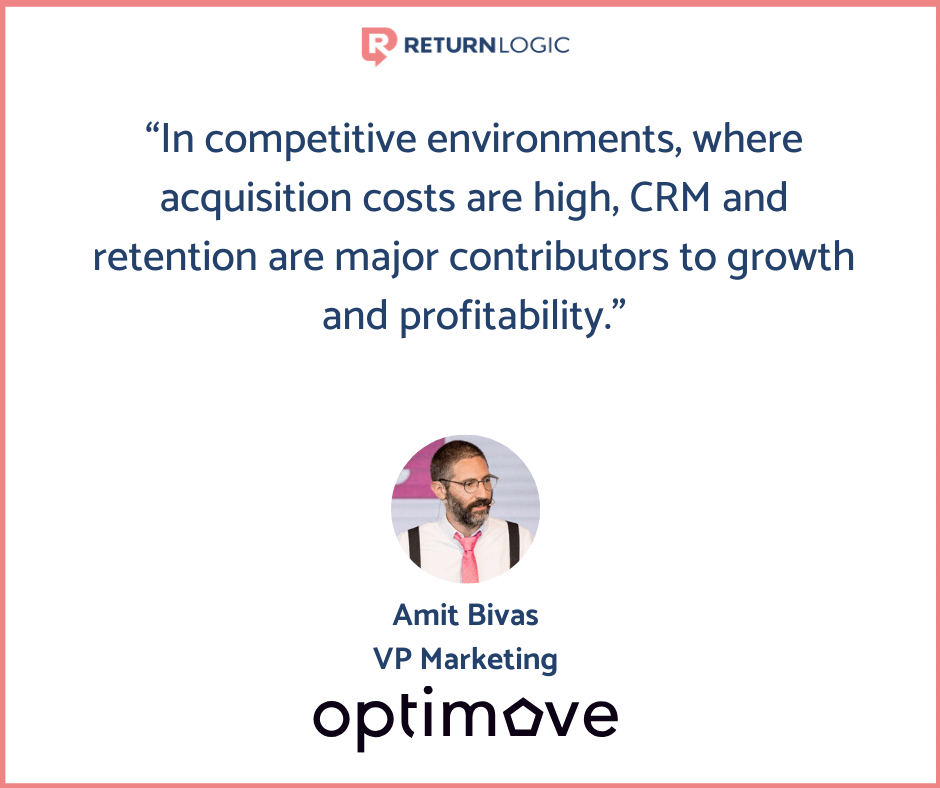
If your typical customer acquisition cost exceeds your average order value, you need to retain shoppers just to break even.
So it’s critical to have a comprehensive understanding of both CAC and AOV in your business.
Keep in mind that effective customer retention isn’t free. We can’t simply expect first-time buyers to come back and purchase again without engagement and intervention.
Be sure to allocate both attention and marketing budget to retention.
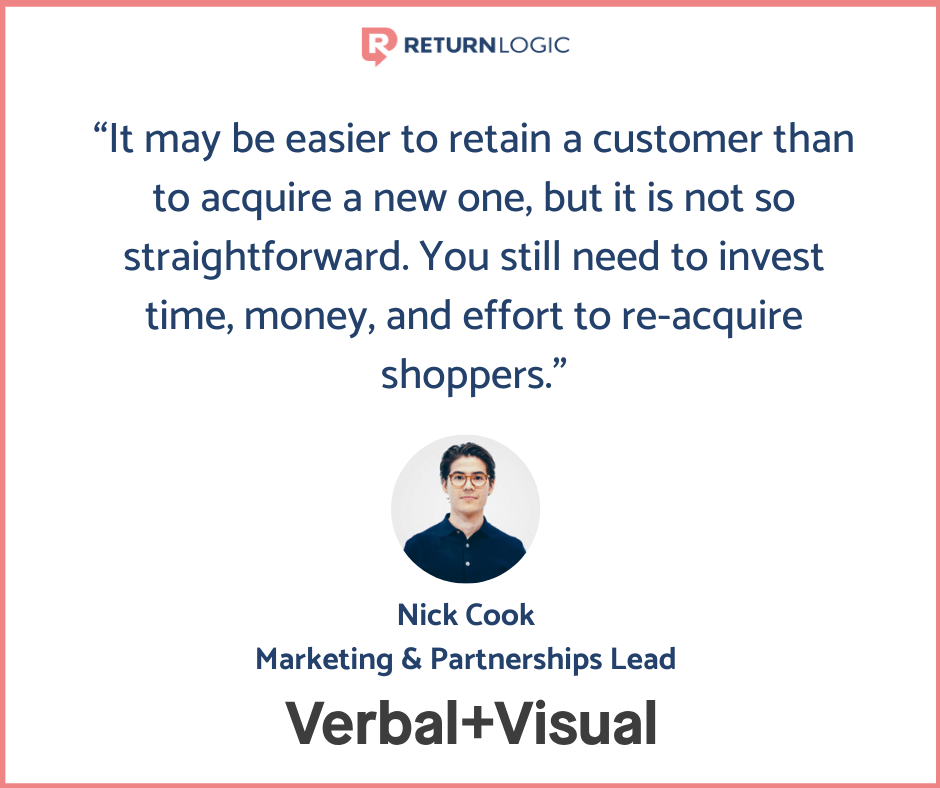
Notice that Nick Cook says the goal isn’t just to retain but to re-acquire shoppers.
That’s because customer acquisition doesn’t truly end at the first purchase. One purchase doesn’t indicate that the customer is now a loyal shopper.
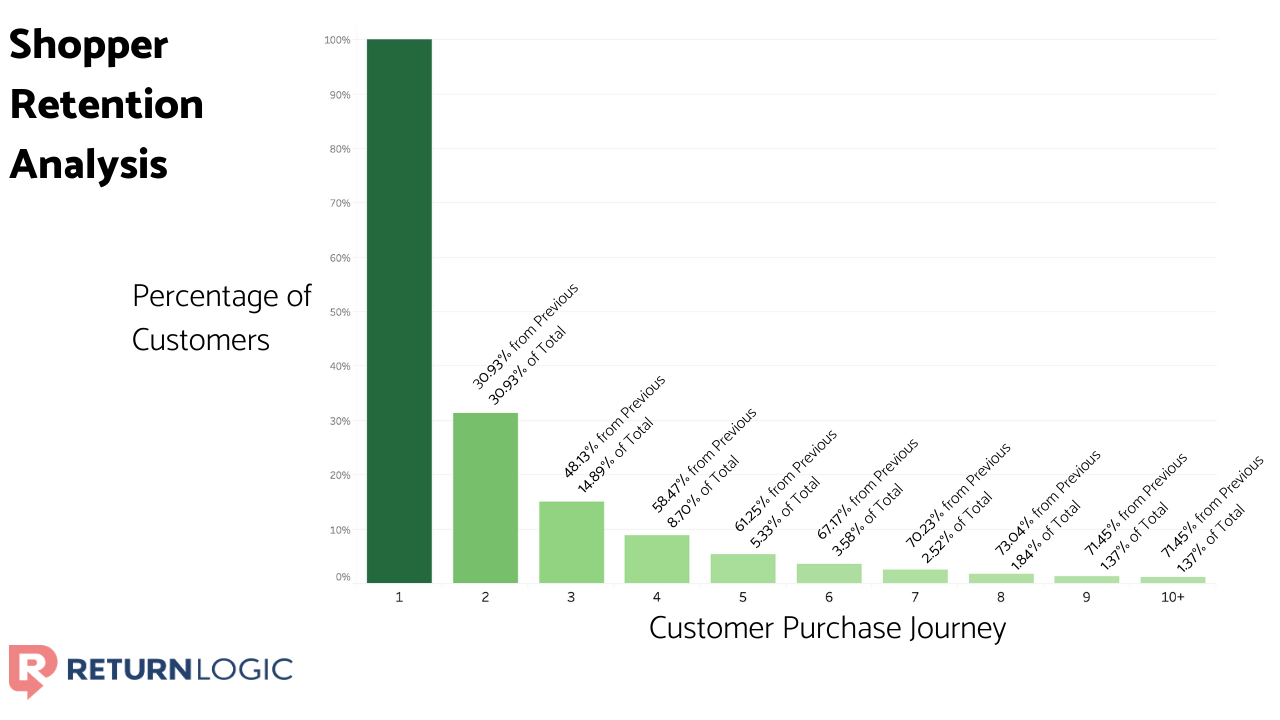
This graphic illustrates the drop-off of shoppers between purchases. It shows the percentage of customers that continued from one purchase to the next and the overall percentage that continued to a given number of purchases.
Across merchants, we see that the most drop-off, or churn, occurs between the first purchase and second purchase.
You don’t fully acquire a customer after just one transaction.
But how can you help a shopper get from the first purchase to the second purchase?
According to Amit Bivas of Optimove, the shopper’s experience during and after the first purchase is pivotal.
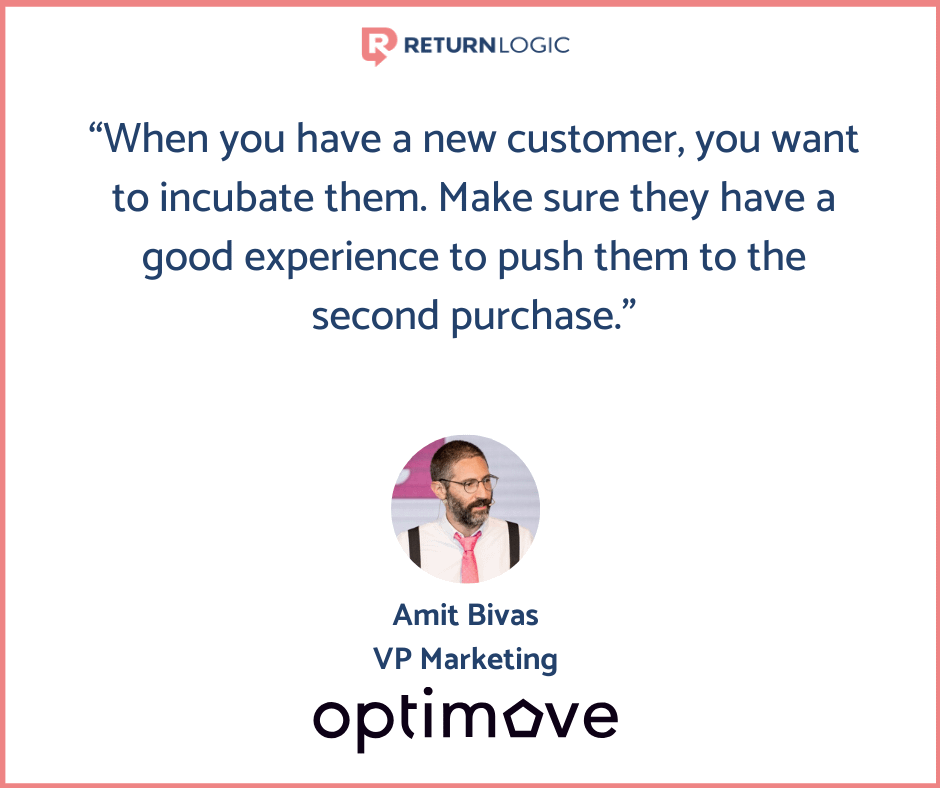
The first purchase is a make-or-break moment in the customer relationship. Strive to create a consistent, positive experience during and after a customer’s first transaction.
But it’s not time to celebrate yet. Soon, you should turn your objective toward setting up a second purchase.
But when should you start retargeting customers?
Engage shoppers while they’re engaging you.
It’s important to re-engage customers soon after their purchase. We see that customers are most likely to buy again immediately following a purchase.
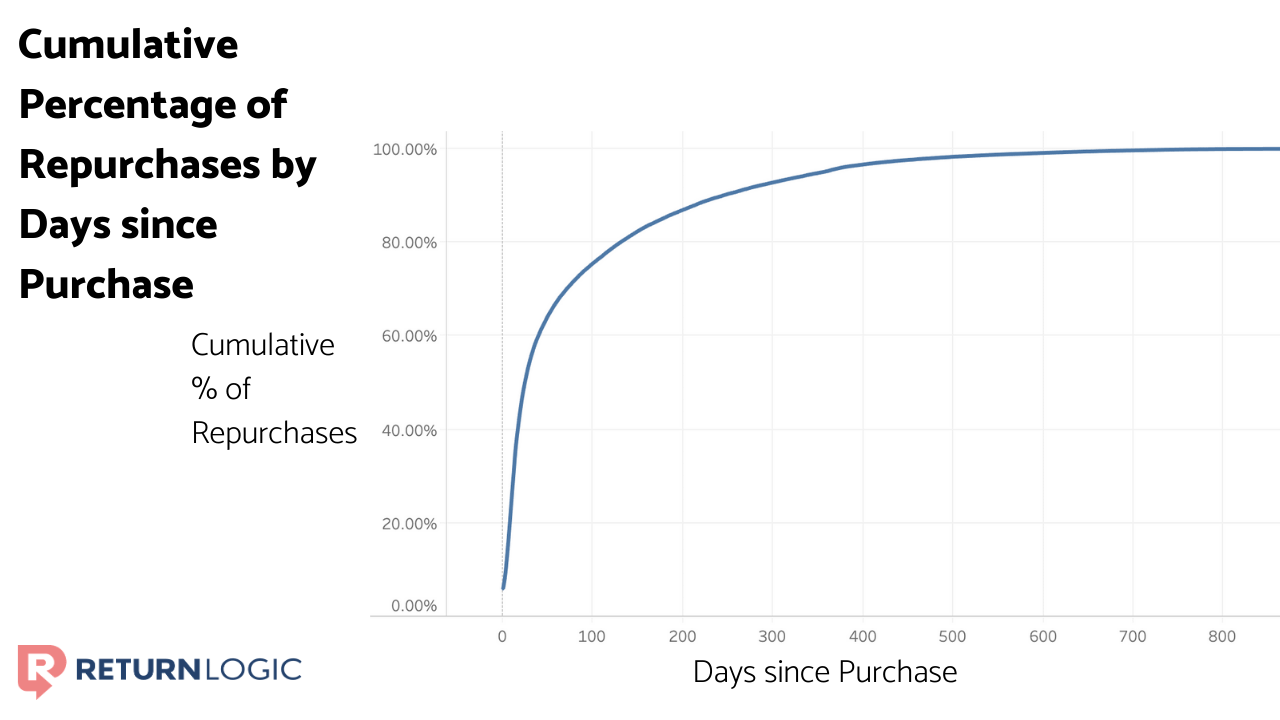
This graph illustrates that, for one brand, around 40% of repurchases have occurred within 25 days of the initial purchase.
While this is bound to vary by business, the lesson is clear: When a customer purchases, capitalize on that moment. If they’re going to buy again, it’s likely going to be soon.
Retailers implement a variety of customer retention strategies to excite and re-engage their existing customer base.
CRM platforms such as Optimove empower merchants with the technology to segment, experiment, and automate their retention efforts in previously unattainable ways.
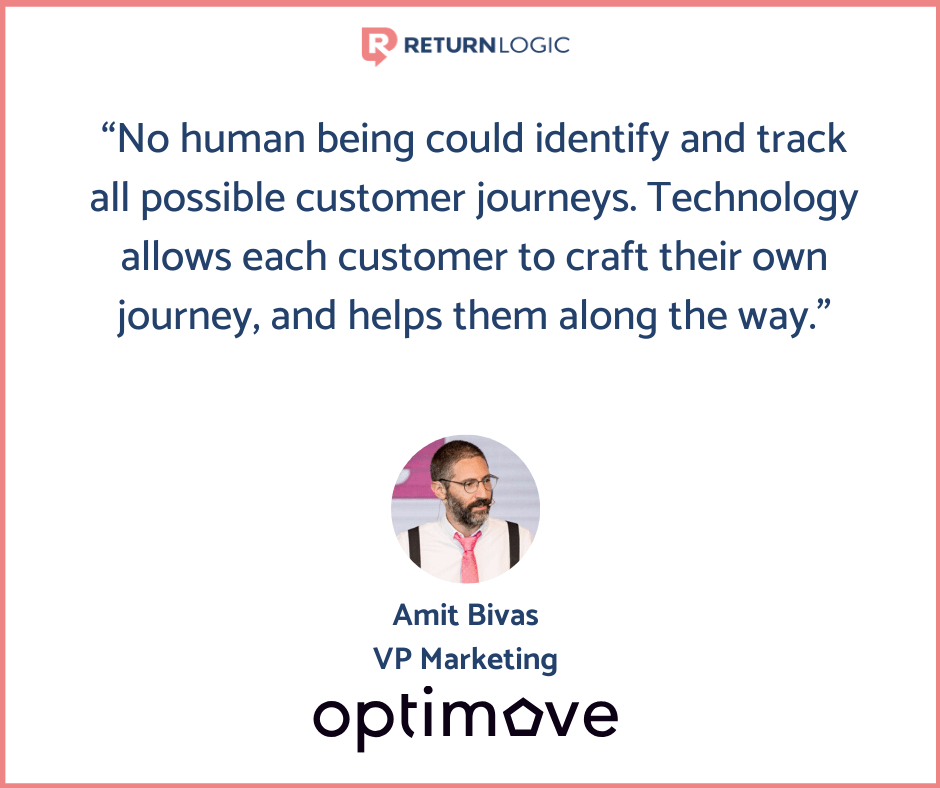
Each shopper is different. They have different interests, shop in different ways, and respond differently to your touchpoints.
Segmentation allows you to classify shoppers by their needs, interests, or patterns to serve them best at scale.
CRM technologies, often fueled by artificial intelligence, provide flexibility for shoppers to interact with your brand as they wish. It will also send them messages and offers expected to drive the most impact.
Establishing a community of shoppers can also be highly effective for retaining shoppers. It brings these individuals closer together and closer to your brand.
But, at times, it can be difficult for retailers to leverage an active base of customers.
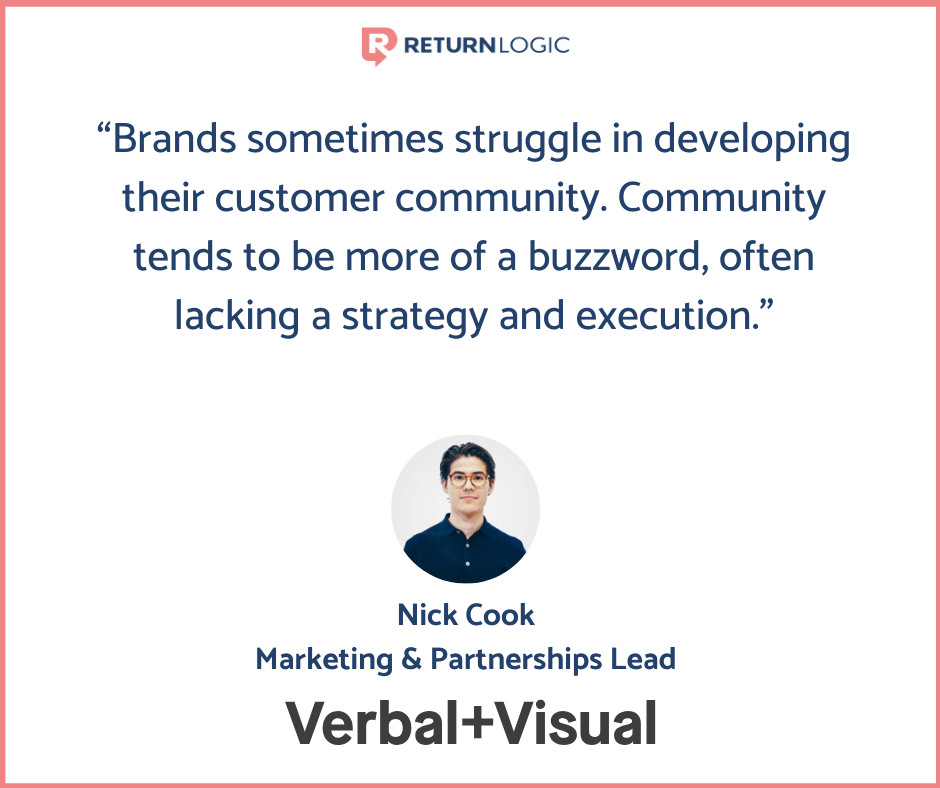
To be effective, a customer community needs to be more than a list of shoppers who purchased from you. It should be something real.
Customers made their first purchase because they liked your products and resonated with your brand. The second, third, and all additional purchases are no different.
The power of a community is its ability to unify and excite its members.

Create value for members in exchange for their continued engagement. Prioritize the relationship and activity rather than simply driving purchases.
You can even leverage these active shoppers to grow your customer base with referral programs.
At the end of the day, retention is about relevancy and creating value for your customer base.
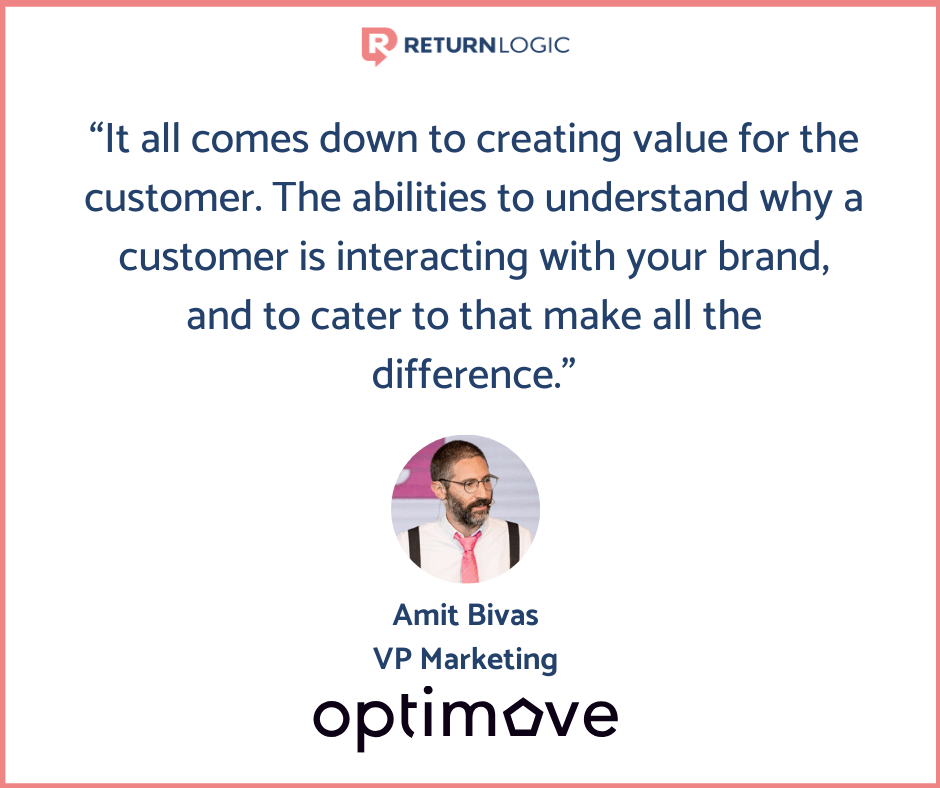
As long as you’re relevant to shoppers’ needs and interests, they will continue to engage with you.
So take the time to understand why customers are interacting with your brand. How did they find you? What about your brand and messaging appeals to them? What do they like about your products?
By catering to those needs and interests, you will continue to create value in the customer relationship. And your shoppers will generate value for you and grow your ecommerce business.
Average Order Value
Average order value refers to the average price shoppers pay per transaction.
Essentially, it’s the average revenue from a single purchase.
While you may not reference AOV as often as customer acquisition or retention in the conversation of revenue growth, it’s every bit as important.
As we mentioned, if your CAC exceeds your AOV, then customer retention is necessary just to break even.
But fortunately, you can influence each of these metrics – CAC, AOV, and retention.
The key to increasing your average order value is creating more value for the customer while they’re shopping. As Nick articulates, prolong the purchase journey.
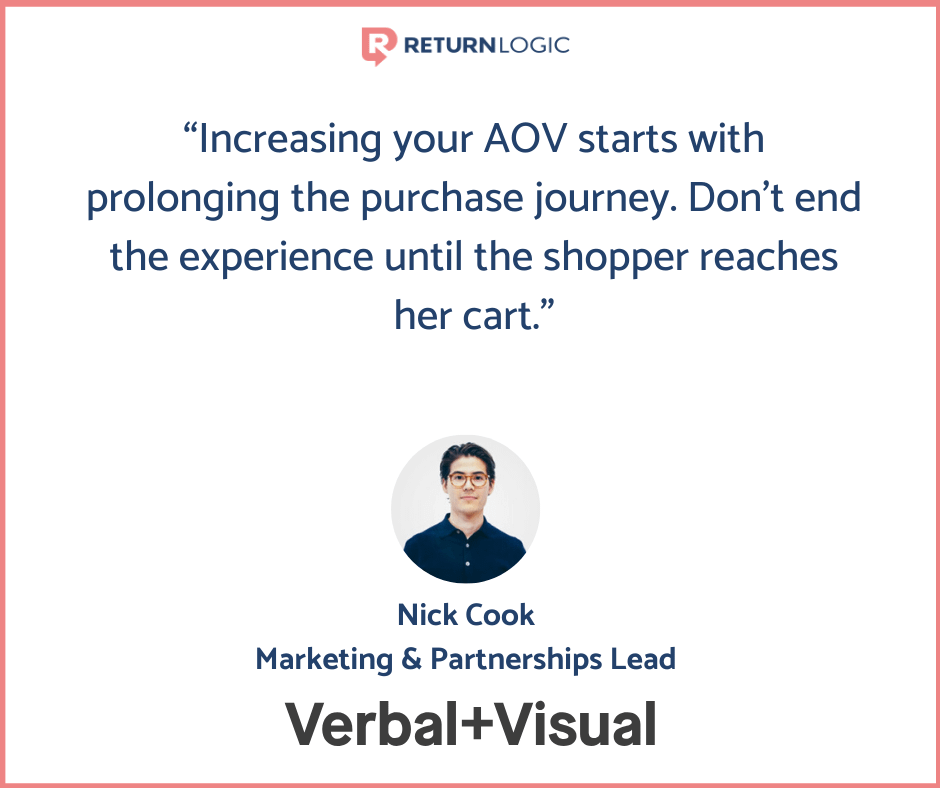
This idea, too, comes back to the on-site experience. You should design your website so that products are not isolated and the purchase experience isn’t cut short.
It should be easy for shoppers to picture a product and envision using it along with other products. Look-books and product recommendations are great for this very purpose.
These tactics work to encourage cross-selling and up-selling, both of which increase the AOV.
But when the shopper is ready to check out, the objective shifts entirely.
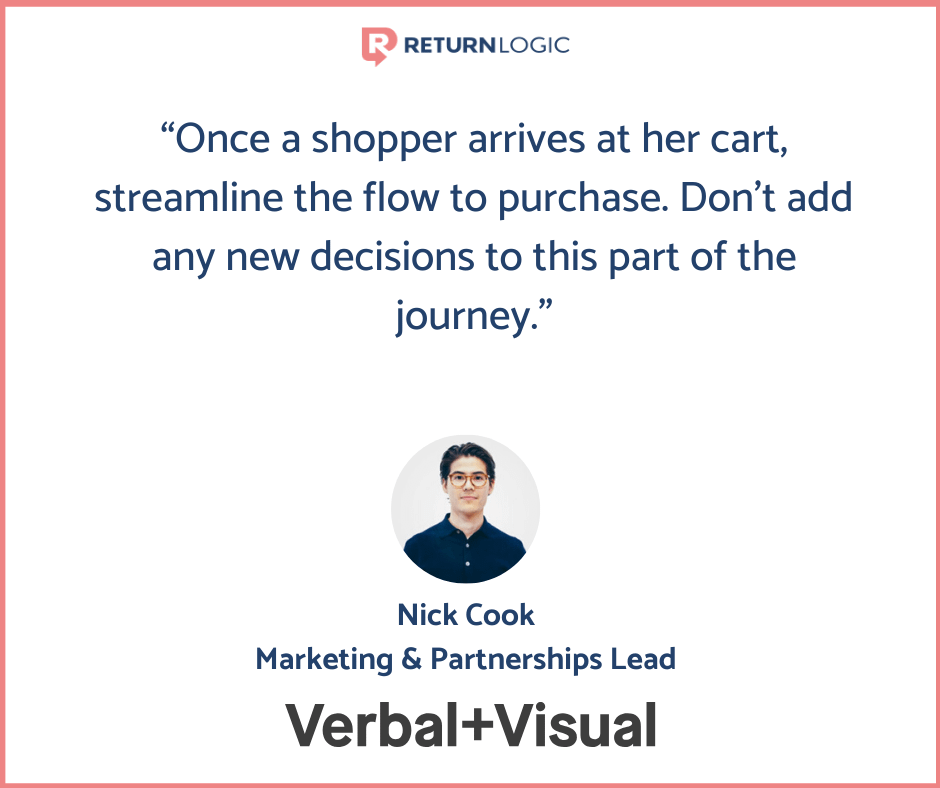
Prolong the purchase experience until the shopper reaches their cart, then optimize the flow to purchase.
In addition, purchase data can highlight relationships between products so you can make better product recommendations to your shoppers.
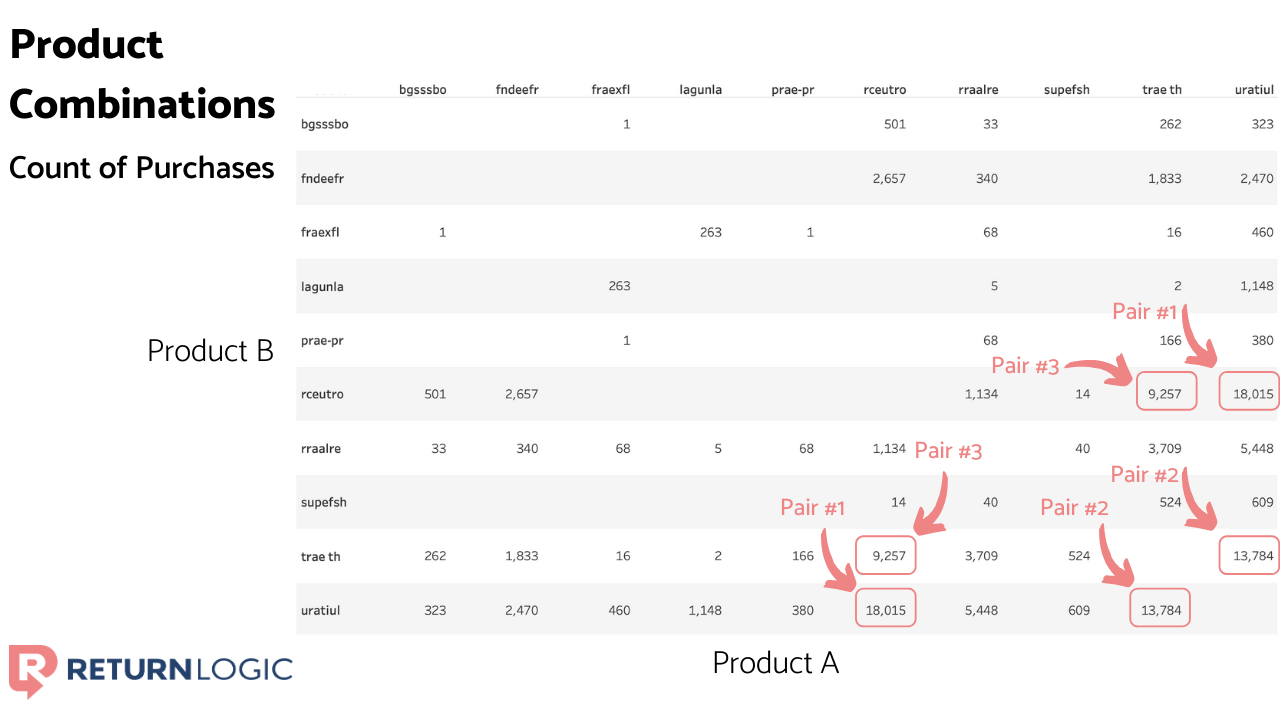
Here, we see the number of transactions that contained possible product combinations for a women’s athletic apparel brand.
But of course, each product has its own sales volume. So, if there are two products with high volumes, you would expect that they’re commonly purchased together. That doesn’t make the product pairing remarkable.
Fortunately, there’s an entire analytical topic devoted to this premise called market basket analysis. But for our purposes, we’ll only touch upon the key metrics that come with it.
Essentially, each metric captures a different part of the picture, a different angle of product relationships.
Support is the percentage of total orders that contain both Product A and Product B.
Confidence is the percentage of orders of Product A that also contained Product B. More or less, demonstrating how common the pair is considering the purchase volume of one of the products.
Lift is the percentage of orders that contained both products, divided by the percentage of orders that contained Product A, times the percentage of orders that contained Product B.
Lift is more complex as a metric, but it reflects how remarkable a product pair is considering the purchase volumes of each product it contains.
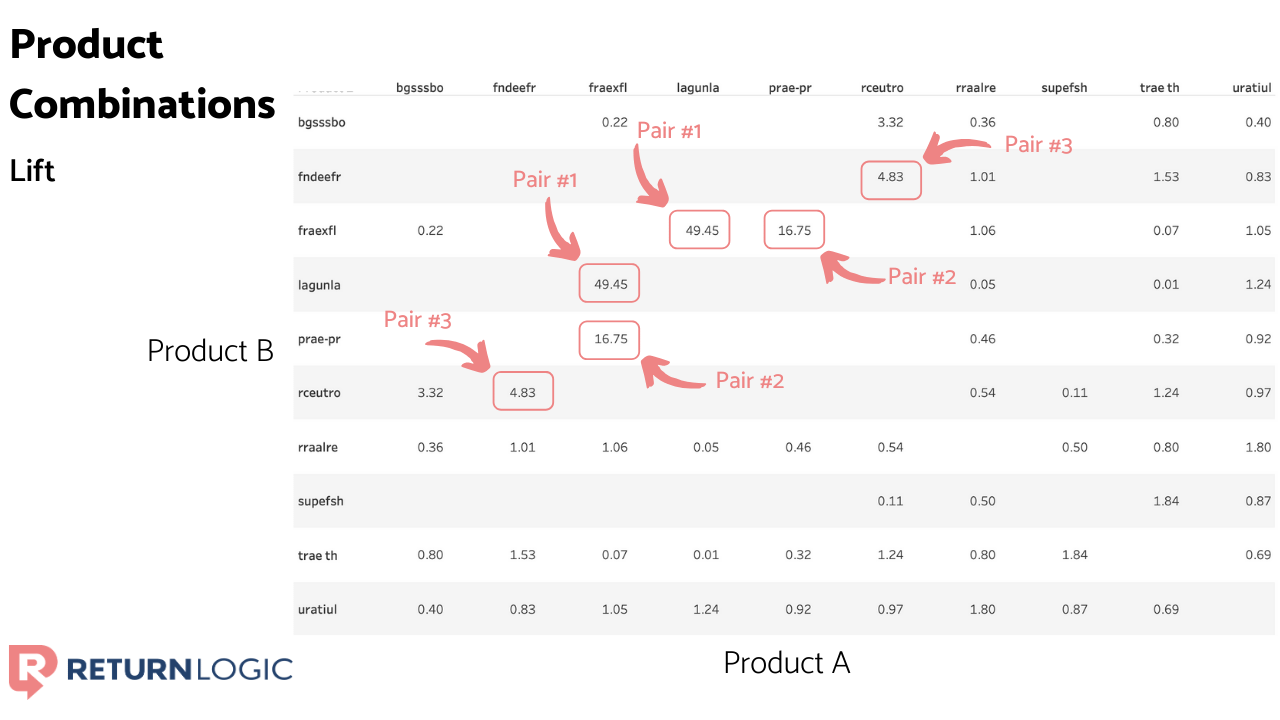
Notice that lift emphasizes entirely different product combinations than a straightforward count of purchases. These products don’t have the advantage of high sales volumes but are still significant product pairs.
Each metric highlights product pairings from a slightly different angle. They enable you to create more informed look-books and on-page product recommendations.
Regardless, the objective here is to increase the average order value. If shoppers spend more per transaction, holding acquisition and retention constant, you’ll see a direct increase in revenue that will grow your ecommerce business.
Incorporate Returns
We’ve covered a lot of ground so far. But it’s important not to exclude returns from this discussion.
As you may know, returns are a part of business in ecommerce.
Return rates often hover between 15% and 30% among online retailers. That means a sizable percentage of your sales revenue is coming back to you as returns.
Of all returned products, less than half resell at full value.
It’s critical to have an effective return management mechanism in place to help you handle the logistical and customer-facing challenges that returns create.
The truth is, return management is a profit center, as well.
Keep in mind 40% of your shoppers have returned a product by their 3rd purchase.
Returns impact the customer experience – a better return process means happier shoppers and higher customer lifetime value.
Concluding Thoughts
Over 20 years ago, Jeff Bezos theorized how to scale an ecommerce business effectively.
There’s no magic wand, no silver bullet. But these fundamental components provide a comprehensive framework for you to increase your revenue and mechanize growth for your business.
Ultimately, the goal in ecommerce is to create value for shoppers. In doing so, they will create value for you.
